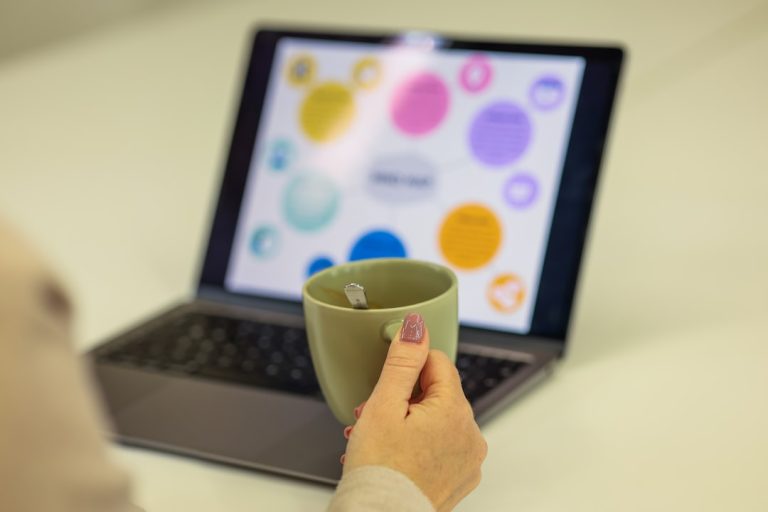
Reading comprehension is a fundamental skill that serves as the cornerstone of effective communication and learning. It goes beyond merely decoding words on a page; it involves the ability to understand, interpret, and engage with the text. This skill is crucial not only in academic settings but also in everyday life, where individuals encounter various forms of written communication, from emails to news articles.
The ability to comprehend what one reads directly influences academic performance, professional success, and personal growth. For students, strong reading comprehension skills can lead to better grades and a deeper understanding of complex subjects, while for adults, it can enhance career opportunities and facilitate informed decision-making. Moreover, reading comprehension fosters critical thinking and analytical skills.
When individuals engage with texts, they are often required to evaluate arguments, identify biases, and draw conclusions based on evidence presented. This process encourages readers to think critically about the information they consume, which is increasingly important in an age where misinformation can spread rapidly. By honing reading comprehension skills, individuals not only become more adept at understanding texts but also develop the ability to question and analyze the information they encounter in various contexts.
This skill set is invaluable in navigating the complexities of modern life, where discerning fact from fiction is essential.
Key Takeaways
- Reading comprehension is crucial for understanding and retaining information.
- Active reading techniques help engage with the text and improve comprehension.
- Improving vocabulary and language skills enhances understanding of written material.
- Graphic organizers and note-taking aid in organizing and retaining information.
- Making connections and predictions while reading can improve comprehension and retention.
Active Reading Techniques
Active reading is an approach that transforms the reading experience from passive absorption to dynamic engagement. This technique involves interacting with the text through various strategies that enhance understanding and retention. One effective method is annotating, where readers make notes in the margins, underline key phrases, or highlight important concepts.
This practice encourages readers to think critically about the material as they read, prompting them to ask questions and make connections between ideas. For instance, while reading a historical text, a student might underline significant events and jot down questions about their implications, thereby deepening their understanding of the subject matter. Another active reading technique is summarization, which involves distilling the main ideas of a passage into concise statements.
This not only reinforces comprehension but also aids in memory retention. For example, after reading a chapter in a biology textbook, a student might summarize the key processes of photosynthesis in their own words. This exercise forces them to process the information actively rather than passively absorbing it.
Additionally, engaging with the text through discussions—whether in study groups or classroom settings—can further enhance comprehension. By articulating thoughts and hearing different perspectives, readers can clarify their understanding and explore new interpretations of the material.
Improving Vocabulary and Language Skills

A robust vocabulary is integral to reading comprehension; it allows readers to grasp nuanced meanings and engage with complex texts more effectively. Expanding one’s vocabulary can be achieved through various methods, such as reading diverse genres and subjects. Exposure to different writing styles and terminologies not only introduces new words but also provides context for their usage.
For instance, reading classic literature may introduce readers to archaic terms that enrich their understanding of language evolution, while contemporary articles can familiarize them with modern jargon relevant to current events. In addition to reading widely, employing vocabulary-building exercises can significantly enhance language skills. Tools such as flashcards, word maps, and vocabulary quizzes can help reinforce new terms and their meanings.
Furthermore, incorporating new vocabulary into daily conversations or writing exercises solidifies understanding and promotes retention. For example, a student learning the word “ubiquitous” might practice using it in sentences related to technology’s pervasive influence in society. By actively engaging with new vocabulary in context, learners can improve their language skills while simultaneously enhancing their reading comprehension.
Utilizing Graphic Organizers and Note-taking
| Student | Utilization of Graphic Organizers | Quality of Note-taking |
|---|---|---|
| Student 1 | High | Excellent |
| Student 2 | Medium | Good |
| Student 3 | Low | Needs Improvement |
Graphic organizers are visual tools that help structure information and clarify relationships between concepts. They can be particularly beneficial for readers who struggle with organizing their thoughts or synthesizing information from complex texts. Common types of graphic organizers include Venn diagrams, mind maps, and flowcharts.
For instance, when reading a comparative analysis of two literary works, a Venn diagram can help readers visually represent similarities and differences between characters or themes. This visual representation aids in comprehension by breaking down complex information into manageable parts. Note-taking is another essential strategy that complements graphic organizers.
Effective note-taking involves capturing key points, ideas, and questions while reading. Techniques such as the Cornell method—where notes are divided into cues, notes, and summaries—can enhance retention and facilitate review. For example, while studying for an exam on a historical event, a student might take notes that include dates, significant figures, and key outcomes in one section while jotting down questions or connections in another.
This organized approach not only aids in comprehension but also serves as a valuable resource for future reference.
Making Connections and Predictions
Making connections is a powerful strategy that enhances reading comprehension by linking new information to prior knowledge or experiences. Readers can draw connections between texts and their own lives (text-to-self), between different texts (text-to-text), or between texts and broader societal issues (text-to-world). For instance, while reading a novel about social justice, a reader might reflect on their own experiences with inequality or relate themes from the book to current events.
These connections deepen understanding by providing context and relevance to the material. Predictions also play a crucial role in active reading. As readers engage with a text, they can anticipate what might happen next based on clues provided by the author.
This forward-thinking approach encourages readers to remain engaged and invested in the narrative or argument being presented. For example, while reading a mystery novel, a reader might predict the identity of the culprit based on character behavior and plot developments. This not only enhances engagement but also fosters critical thinking as readers evaluate their predictions against the unfolding narrative.
Summarizing and Synthesizing Information

Summarizing is an essential skill that involves distilling complex information into concise statements that capture the essence of the material. This process requires readers to identify main ideas and supporting details while filtering out extraneous information. Effective summarization not only reinforces comprehension but also aids in memory retention by allowing readers to focus on key concepts.
For instance, after reading an article on climate change, a student might summarize the main arguments regarding its impact on global ecosystems in a few sentences. Synthesis takes summarization a step further by integrating information from multiple sources or perspectives into a cohesive understanding. This skill is particularly valuable in academic research or when analyzing diverse viewpoints on a topic.
For example, when writing a research paper on renewable energy sources, a student might synthesize findings from various studies to present a comprehensive overview of current advancements and challenges in the field. By synthesizing information rather than merely summarizing it, readers develop a deeper understanding of complex issues and are better equipped to engage in informed discussions.
Practicing Critical Thinking and Analysis
Critical thinking is an essential component of reading comprehension that involves evaluating information objectively and making reasoned judgments based on evidence. This skill enables readers to assess the credibility of sources, identify biases, and analyze arguments presented in texts. For instance, when reading an opinion piece on a controversial issue, a critical thinker would examine the author’s claims, consider counterarguments, and evaluate the strength of the evidence provided.
This analytical approach fosters deeper engagement with the material and encourages readers to form their own informed opinions. Practicing critical thinking can be enhanced through various activities such as debates, discussions, or reflective writing exercises. Engaging in debates allows individuals to articulate their viewpoints while considering opposing perspectives, thereby sharpening their analytical skills.
Additionally, reflective writing prompts readers to analyze their thoughts about a text critically; for example, after reading an article on economic policy, a reader might reflect on how the proposed changes could impact different socioeconomic groups. By consistently practicing critical thinking and analysis in relation to reading materials, individuals become more discerning consumers of information.
Seeking Help and Support for Reading Comprehension Challenges
Despite best efforts, some individuals may still encounter challenges with reading comprehension that require additional support. Recognizing when assistance is needed is crucial for overcoming these obstacles effectively. Various resources are available for those struggling with comprehension issues; these include tutoring services, specialized reading programs, or educational workshops focused on literacy skills.
In addition to formal support systems, leveraging technology can also aid in improving reading comprehension skills. Numerous apps and online platforms provide interactive exercises designed to enhance vocabulary, comprehension strategies, and critical thinking skills.
For example, platforms like Quizlet offer flashcards for vocabulary building while websites like ReadTheory provide leveled reading passages followed by comprehension questions tailored to individual skill levels. By seeking help through these resources—whether human or technological—individuals can develop effective strategies for overcoming challenges in reading comprehension and ultimately enhance their overall literacy skills.
If you are interested in exploring the world of American short stories, you may want to check out the article “Shirley Jackson: Master of American Short Stories”. This piece delves into the works of Shirley Jackson, a renowned author known for her captivating and thought-provoking narratives. By studying the writing techniques and storytelling methods of accomplished authors like Jackson, readers can gain valuable insights into improving their own reading comprehension skills.
FAQs
What is reading comprehension?
Reading comprehension is the ability to understand and interpret the meaning of a text. It involves not only understanding the words on the page, but also making connections, drawing inferences, and analyzing the text.
Why is reading comprehension important?
Reading comprehension is important because it is a fundamental skill that is necessary for success in school and in life. It is essential for understanding instructions, learning new information, and engaging with the world around us.
What are some strategies for improving reading comprehension?
Some strategies for improving reading comprehension include active reading, making connections, asking questions, summarizing, and visualizing. Additionally, building vocabulary, practicing critical thinking, and using graphic organizers can also help improve reading comprehension.
How can active reading improve reading comprehension?
Active reading involves engaging with the text by asking questions, making predictions, and summarizing key points. This helps readers stay focused and retain information, leading to better comprehension.
What is the role of vocabulary in reading comprehension?
Vocabulary plays a crucial role in reading comprehension as it allows readers to understand the meaning of words and concepts within a text. Building a strong vocabulary can enhance comprehension and overall reading ability.
How can visualizing help improve reading comprehension?
Visualizing involves creating mental images of the text, which can aid in understanding and remembering the content. This strategy can help readers make connections and engage with the material on a deeper level.



